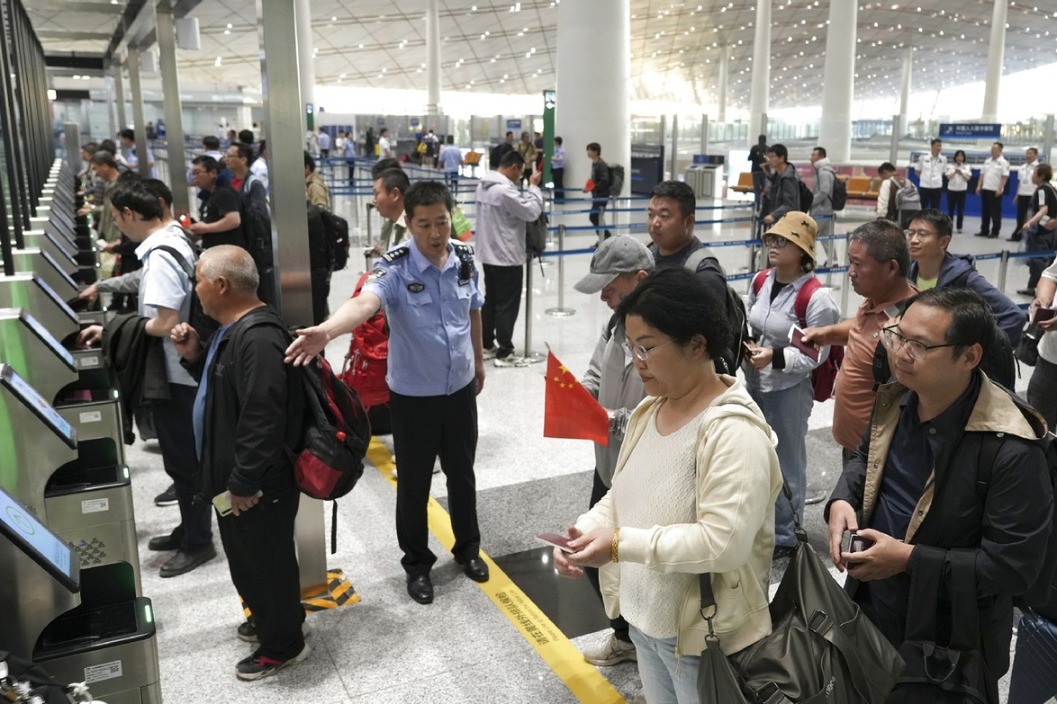Elephant in the room
Renegotiation of the USMCA will be shaped by the evolution of the structural tensions between the North American countries and China


The renegotiation of the United States-Mexico-Canada Agreement (USMCA), scheduled to take place between 2025 and 2026, is technically an exercise aimed at updating the terms for regional trade. However, a strategic reconfiguration is unfolding beneath the surface, driven by a country that is not part of the agreement: China. Paradoxically, the sustainability and transformation of the USMCA are deeply shaped by the evolution of structural tensions between the North American countries and China. Although the agreement may be interpreted as a geopolitical containment tool against China's presence in North America, its upcoming redesign will largely depend on whether the US-China competition stabilizes — or escalates. In other words: the USMCA and China are profoundly interdependent.
Since its inception in 2018, the USMCA has been presented as a revision of the former North American Free Trade Agreement, particularly in addressing new realities in digital trade, environmental protection and labor rights. However, the geopolitical dimension of the treaty has gained increasing relevance in recent years, especially in the hypothetical context of deglobalization and great power rivalry. The USMCA is not merely a regional trade agreement, but rather a mechanism to reorganize supply chains, protect strategic sectors, and shield against practices of China that are regarded as "unfair".
One of the main factors that explain China's centrality in the geopolitics of the USMCA is the nearshoring from Asia to North America. This trend has accelerated due to the tariff tensions between Beijing and Washington, as well as the disruptive effects of the pandemic and the Ukraine crisis. In November 2022, Mexico's then minister of the economy Raquel Buenrostro announced that around 400 companies were seeking to relocate their operations from Asia to Mexico, and subsequent data appear to confirm this trend, particularly in the automotive, construction, real estate and logistics sectors — industries all underpinned by manufacturing. Among these companies, about 17 percent are Chinese in origin, which complicates the geopolitical dilemma.
This geostrategic shift aims to reduce dependency on Chinese supply chains, but does not necessarily imply a total rupture. In May 2025, several Chinese companies announced their intention to establish operations in Mexican territory, promising to comply with USMCA rules and thus avoid the tariffs the US imposes directly on Chinese products. This phenomenon reveals a structural paradox: the very treaty designed to contain China may ultimately be leveraged by it to indirectly enter the US market. In this way, the USMCA becomes a space of subtle contestation, where the nationality of investments and the traceability of value chains acquire strategic importance.
With the treaty's review approaching, the three countries are preparing for a renegotiation that will not only assess the economic impacts of the agreement, but must also respond to new situations. The trade talks between the US and China have been marked by aggressive rhetoric and the persistence of tariffs on technological goods, electric vehicles and strategic components. Although US President Donald Trump announced in early June 2025 that a deal with China was "done", previous experiences demonstrate that a cautious interpretation of this new "achievement" in stabilizing US-China strategic competition is in order. It may also be read as groundwork for the upcoming treaty renegotiation.
In this context, the US will likely push for stricter clauses on rules of origin, intellectual property and supply chains, aiming to limit the triangulation of Chinese products through Mexico, a country that, for its part, occupies an ambivalent position. On the one hand, it needs to preserve productive integration with its northern partners and avoid sanctions or retaliation over "backdoor" practices. On the other hand, Chinese investment represents a crucial opportunity to strengthen its industrial base and expand strategic autonomy. This tension between dependency and diversification will be one of the central axes of Mexico's position during the treaty's review.
Beyond trade, the competition for control over emerging technologies, strategic minerals, and logistical corridors reinforces the idea that the USMCA cannot be understood in isolation from the global power struggle. For instance, Chapter 19 on digital trade is expected to be one of the most controversial, as Chinese software companies and digital platforms seek to expand within the region despite US bans. A similar scenario may unfold with Chapter 24 on the environment, whose provisions could be used to justify restricting the entry of energy inputs or goods produced under Chinese standards.
In this sense, the geopolitics of the USMCA do not solely concern Mexico, the US and Canada, but revolve around China's structural influence on the global economic system. The 2026 review of the agreement will ultimately be an exercise in strategic positioning amid US-China competition, wherein each country will make decisions and define policies to determine the conditions and extent of openness to Chinese capital, technologies and goods.
Far from being a passive observer, China acts as a catalytic agent in the productive reorganization of North America. Through its investments, participation in global supply chains and commercial triangulation strategies, the Asian power is shaping the contours of the USMCA. Thus, the paradox becomes clear: the future of one of the most important regional economic integration agreements will depend on the trajectory of China-US relations, and this is a reality that Washington cannot ignore.

The author is an associate professor of international relations at the Metropolitan Autonomous University and a senior fellow on China at the Mexican Council on Foreign Relations. The author contributed this article to China Watch, a think tank powered by China Daily. The views do not necessarily reflect those of China Daily.
Contact the editor at editor@chinawatch.cn.
































